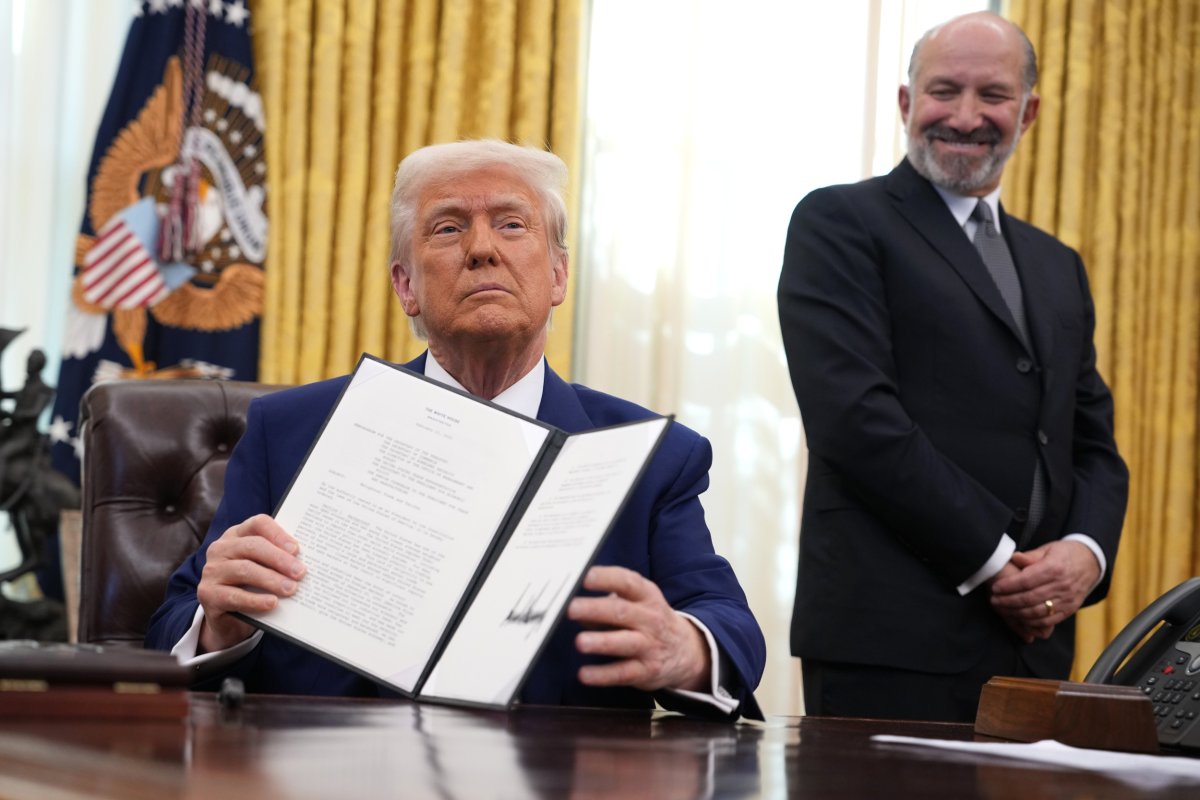United States' trade deficit—total goods and services imports minus exports—jumped 25 percent last month, according to the latest Bureau of Economic Analysis.
The annual deficit in goods and services increased from $78.9 billion in November to $98.4 billion in December, a rise of $19.5 billion.
Annually it rose $133.5 billion—up from from $784.9 billion the previous year to $918.4 billion.
As the new White House administration seeks to overhaul global trade, experts have suggested countries that routinely run large surpluses with the U.S. will be a target of President Donald Trump's tariffs.
The map below shows which countries have the U.S. had the largest trade deficits last year, according to the International Trade Administration.
Why It Matters
Running trade deficits, as the U.S. has done since 1976, is not inherently a negative indicator for a nation's economic health, and often stem from high foreign investment, the relative strength of the dollar to other countries' currencies, as well as American access to cut-price imports from across the globe.
However, the disparity and other countries' tariffs on U.S. goods have been cited by President Trump as a reason for more tariffs, which his White House have callled "a powerful, proven source of leverage for protecting the national interest."
The map below shows which countries hold the U.S. has the largest trade decifits.
What To Know
According to the Department of Commerce's International Trade Administration, the U.S runs its largest deficit of $295.4 billion with China, which has been among America's most significant trading partners since joining the World Trade Organization in 2001.
In 2024, the U.S. imported goods valued at $438.9 billion, reflecting a 2.8 percent increase from 2023, while imports declined by 2.9 percent to $143.5 billion.
Nonresident senior fellow at the GeoEconomics Center Barbara C. Matthews, a former US Treasury attaché to the European Union, told the Atlantic Council, an American international affairs think tank that favors Atlanticism, earlier this month that a United Nations trade report indicated countries most at risk for tariff tussles with the U.S. will be those with both trade imbalances and high tariffs.
The U.S. also runs significant deficits with its northern and southern neighbors, thanks to the significant level of imports from Canada and Mexico.
The U.S. imported $412.7 billion worth of goods from Canada in 2024, while exporting $348.5 billion, resulting in a trade deficit of $64.2 billion.
Meanwhile, Mexico imported $334.0 billion in U.S. goods, exporting $505.9 billion for an overall trade deficit of just over $171.8 billion.
Other significant trade deficits are run with Vietnam ($123.5 billion), the Republic of Ireland ($86.7 billion) and Germany ($84.8 billion).
What People Are Saying
President Trump's executive order on "reciprocal tariffs," signed on Thursday, read: "The United States is one of the most open economies in the world, yet our trading partners keep their markets closed to our exports. This lack of reciprocity is unfair and contributes to our large and persistent annual trade deficit."

A White House official told reporters that the administration was examining how to roll out these reciprocal tariffs, with a focus on the most "egregious" issues such as countries running largest trade surpluses with the U.S. and imposing their own high tariffs, Reuters reported.
Regarding his currently paused tariffs on Canada and Mexico, Trump described the large deficits run with both countries as "massive subsidies," citing this as a motivation for the duties alongside concerns over immigration and drug trafficking.
Economist Gary Hufbauer previously told Newsweek: "As long as the trade deficit is elevated and rising, Trump will cite the numbers as evidence of unfair foreign practices and the need for more tariffs."
"The current rise in the trade deficit simply reflects the fact that the U.S. economy is doing better than its trading partners," he added. "Demand in the U.S. is stronger than demand elsewhere. As a matter of economic history, the U.S. trade deficit expands when the U.S. economy is strong; it contracts when the U.S. economy goes into recession."
What Happens Next?
After announcing the imposition of "reciprocal tariffs" on Thursday, president Trump said they could cause "some short-term disturbance" and "prices could go up somewhat in the short term," but that, "long term it's going to make our country a fortune."
Do you have a story we should be covering? Do you have any questions about this article? Contact LiveNews@newsweek.com.
fairness meter
About the writer
Hugh Cameron is Newsweek Live News Reporter based in London, U.K. His focus is reporting on international politics, conflict, and ... Read more



